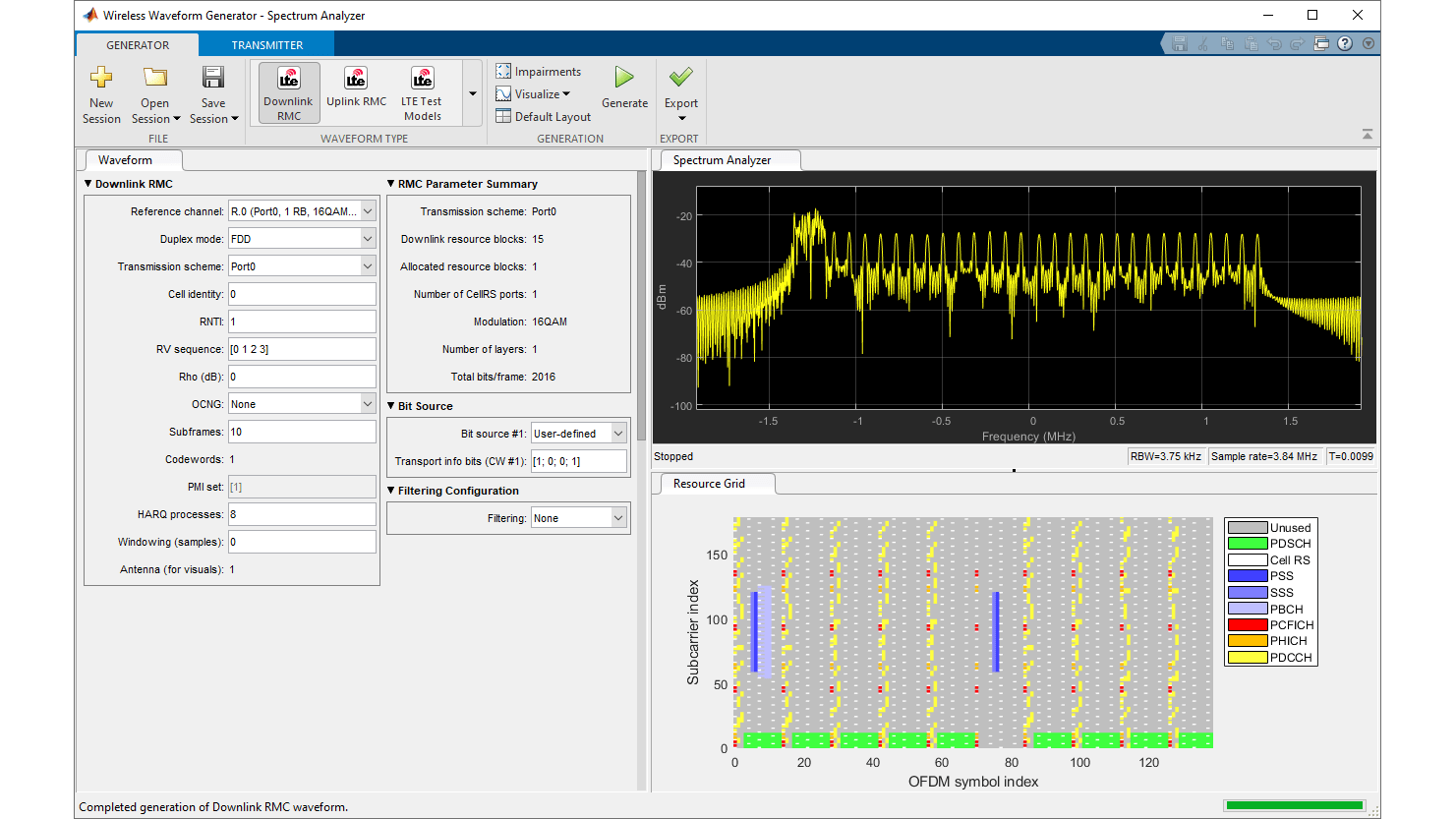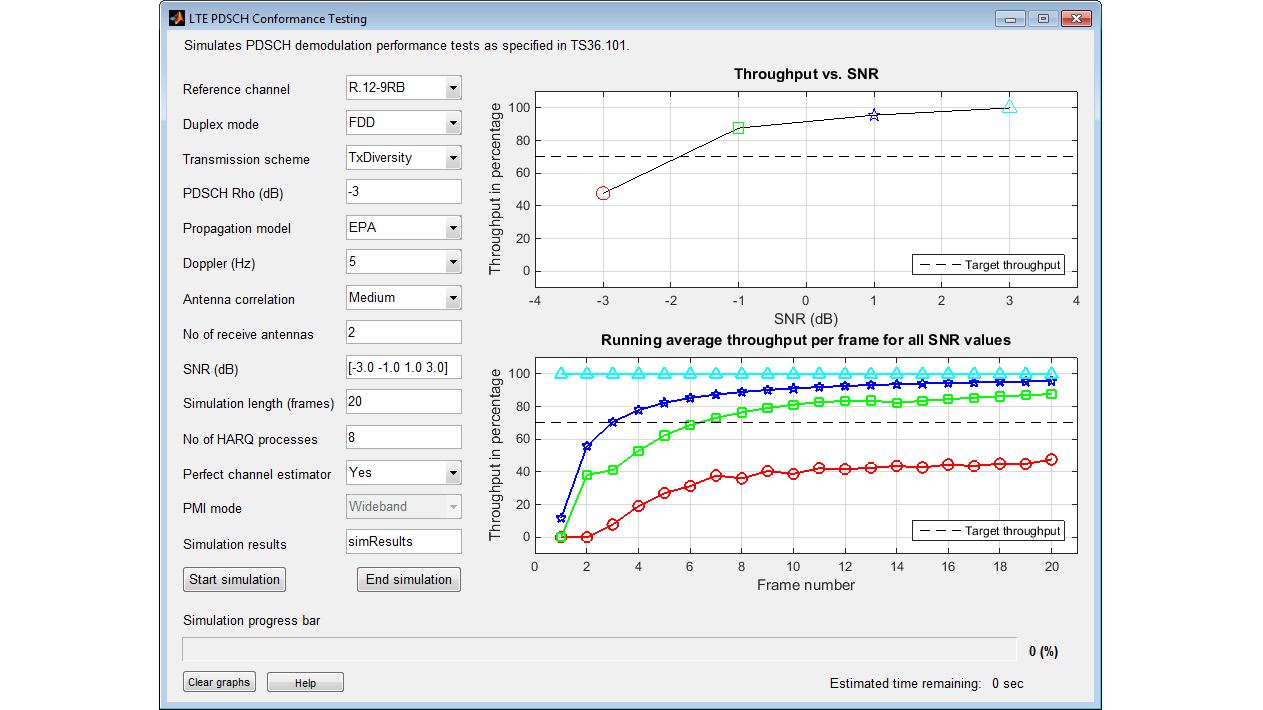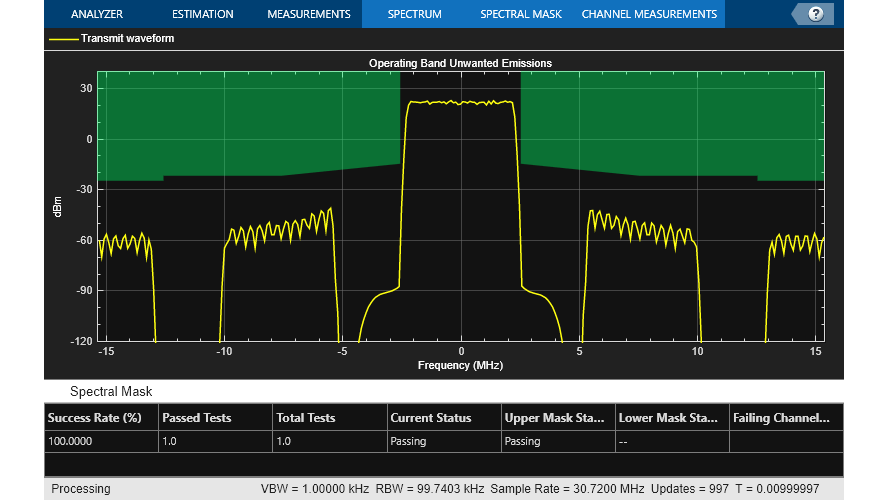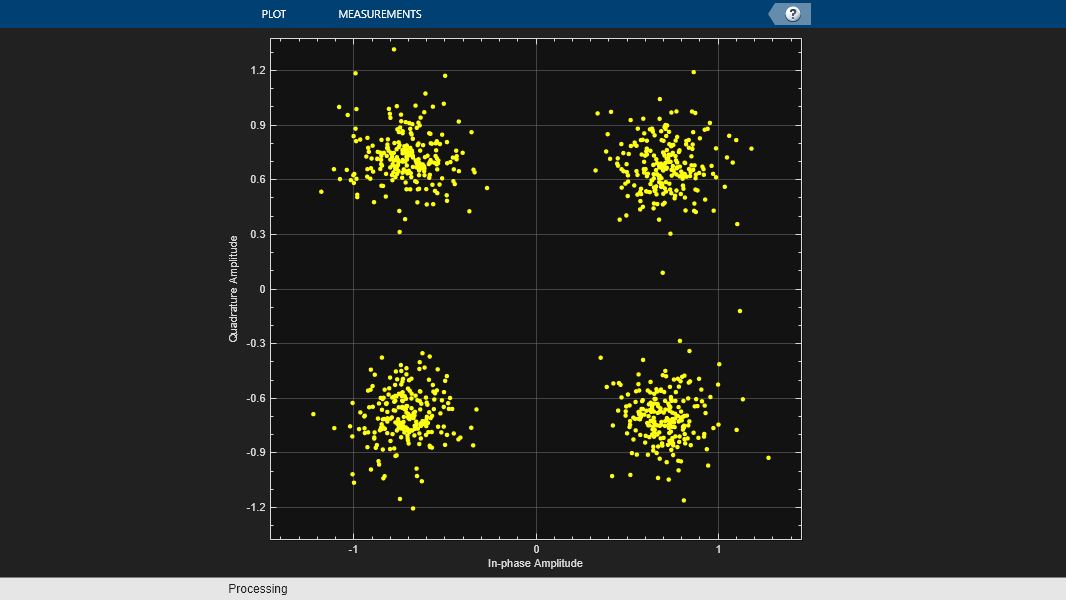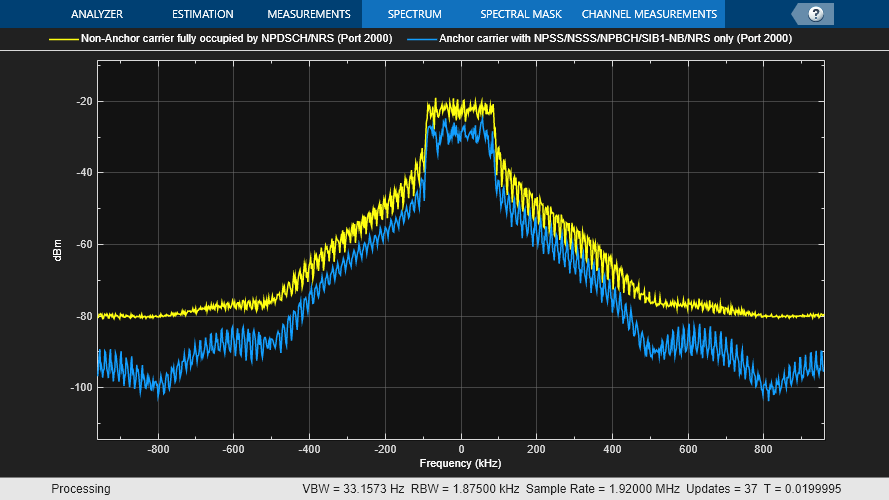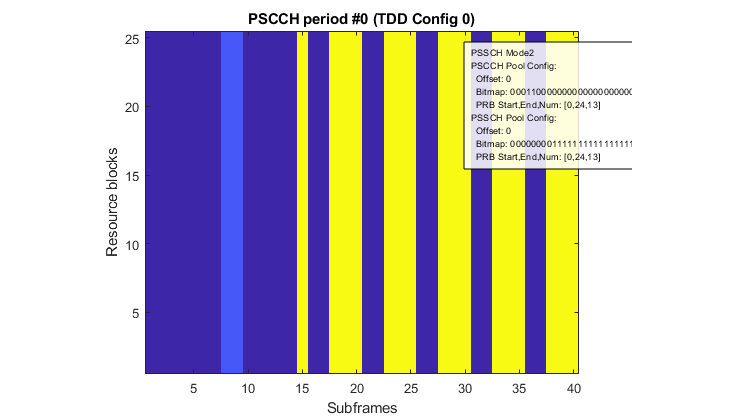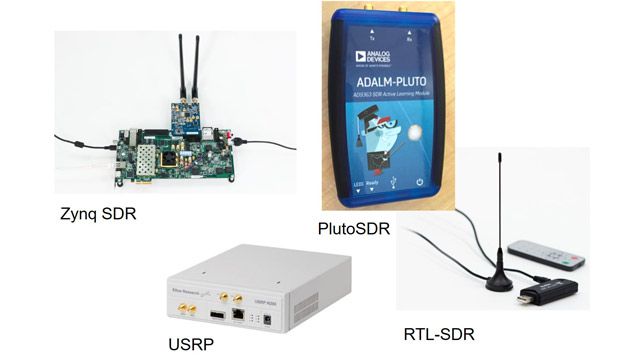Simulate, analyze, and test the physical layer of LTE and LTE-Advanced wireless communications systems
LTE Toolbox provides standard-compliant functions and apps for the design, simulation, and verification of LTE, LTE-Advanced, and LTE-Advanced Pro communications systems. The system toolbox accelerates LTE algorithm and physical layer (PHY) development, supports golden reference verification and conformance testing, and enables test waveform generation.
With the toolbox you can configure, simulate, measure, and analyze end-to-end communications links. You can also create and reuse a conformance test bench to verify that your designs, prototypes, and implementations comply with the LTE standard.
Using LTE Toolbox with RF instruments or hardware support packages, you can connect transmitter and receiver models to radio devices and verify your designs via over-the-air transmission and reception.
Waveform Generation
Generate standard-compliant LTE, LTE-Advanced, LTE-Advanced Pro and UMTS waveforms. Configure and generate custom waveforms, test models (E-TM), and reference measurement channels (RMC). Interactively create, visualize, and export waveforms with the Wireless Waveform Generator app.
Link-Level Simulation
Model end-to-end communication links. Perform waveform generation, channel modeling, and receiver operations. Test conformance using metrics such as BER, BLER, and throughput. Characterize and simulate 3D channels, MIMO fading channels (EPA, EVA, and ETU), and moving high-speed train MIMO channels.
Test and Measurement
Evaluate the performance of LTE RF transmitters and receivers using measurements such as EVM, ACLR, and in-band emissions. Characterize the impact of IQ imbalance, phase noise, and power amplifier nonlinearities on the performance of LTE transceiver. Generate coexisting LTE and 5G NR waveforms for dynamic spectrum sharing.
Signal Recovery
Perform LTE downlink and uplink receiver operations, including frame synchronization, frequency offset, frequency correction, channel estimation, and zero-forcing and MMSE-based equalization. Model UE detection and cell identity search, including master information block (MIB) decoding and first system information block (SIB1) recovery.
NB-IoT
Model and simulate applications for the Internet of Things (IoT). Generate downlink waveform for in-band and guardband operation mode on an LTE carrier. Perform a narrowband physical downlink shared channel (NPDSCH) throughput simulation in a non-terrestrial network (NTN) channel. Model narrowband Internet of Things (NB-IoT) and narrowband physical random access channel (NPRACH).
Sidelink D2D and C-V2X
Model device-to-device (D2D) and cellular vehicular communications (C-V2X) applications. Simulate sidelink transmission and reception for direct communications, including Release 14 vehicle-to-vehicle wireless communications.
Radio Connectivity
Connect your transmitter and receiver models to radio devices, including RF instruments or software-defined radio (SDR) hardware. Transmit, acquire, and analyze image and other digital data using an LTE waveform and supported radio devices. Verify your designs via over-the-air transmission and reception.
